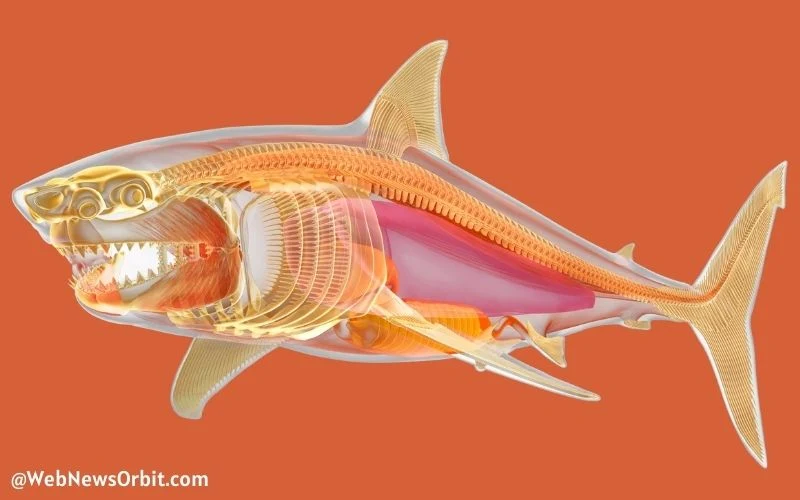Sharks have always captured our imaginations - in everything from their power to their mysterious presence within the vast blue waters.
Have you ever thought about the structure of the skeleton that supports these predators of the apex? This article will plunge into the deep ocean to answer the fascinating question of how many bones do sharks have?
{getToc} $title={Table of Contents}
Let's examine the anatomy as well as myths and interesting details about the skeletons of these amazing creatures.
How Many Bones Does a Shark Have: The Myth Unveiled
Contrary to what many believe, sharks don't have a normal skeletal system, as do vertebrates in general.
The idea that sharks have multiple bones usually stems from the myth of bony fish. But the reality is both amazing and surprising.
Cartilage: The Shark's Secret Weapon
Sharks are part of a distinct species of fish known as chondrichthyans. It includes sharks and Rays. In lieu being made of bone, sharks possess an skeleton that is mostly made of cartilage.
The flexible and light tissue has many advantages for these predators of the ocean.
Cartilage enables sharks to move easily through the water because of its light weight when compared to bone.
The sleek design aids in their quick and agile moves, which makes them extremely efficient hunter.
The Structure of a Shark's Skeleton
Although sharks don't have the conventional bones that are found in vertebrates. However, their cartilaginous skeleton is an amazing feat of engineering.
Let's take a review of the main elements of a shark's skeletal system:
Cartilage Components
Axial Skeleton: The axial skeleton is the shark's central core comprising the vertebral column, the skull and the ribs. This structure is designed to provide the necessary support and protection for vital organs.
Appendicular Skeleton: As opposed to terrestrial animals, sharks don't have legs. However, the appendicular part of their skeleton includes the fins paired that help with stabilization and steering.
Jaw and Teeth: The most well-known aspect of a shark can be its jaw. It isn't directly connected with the skull.
It is instead suspended by ligaments and muscles which allow the jaw to extend when taking prey.
Sharks are constantly shedding and replacing their teeth, making sure they always have sharp and effective tools to hunt.
Evolutionary Advantages
The evolution of cartilage over bone provides sharks with distinct advantages. The absence of bones that weigh a lot makes them buoyant, preserving energy while they traverse their vast ecosystems.
In addition, the elasticity of cartilage acts as an effective shock absorber, helping the predator to survive.
Debunking Myths About Shark Skeletons
A myriad of myths and misinformation concern shark skulls. Let's discuss several of the more commonly-repeated misconceptions:
Myth 1: Sharks are Boneless
Sharks do not have a bone-free body They have cartilage as a skeleton that is flexible and resilient tissue that provides numerous benefits.
Myth 2: Cartilage Hinders Growth
Contrary to what many believe, cartilage is a barrier to growth, the cartilage of sharks grows like all of their bodies, allowing their growth.
Myth 3: All Cartilage is Alike
The cartilage of every individual is not identical. Shark cartilage is distinct from cartilage that we have in our ears and nose, showing the amazing changes that have occurred over the course of millions of years.
FAQs (Frequently Asked Questions) About Shark Skeletons
Q 1. Do sharks have bones?
A 1. Sharks do not have bones with a skeleton comprised predominantly of cartilage.
Q 2. What number of bones do sharks have inside their jaws?
A 2. Sharks possess many rows of teeth within their jaws. However, they aren't bones.
Q 3. Can sharks get osteoporosis?
A 3. The answer is no, osteoporosis is an issue which affects bones. since sharks don't have bones, they are not able to be affected by this condition.
Q 4. How can a cartilage skeleton influence the buoyancy of sharks?
A 4. Cartilage is lighter than bone, which contributes to a shark's buoyancy as well as energy conservation.
Q 5. Do sharks stop expanding due to their cartilaginous bones?
A 5. Sharks grow throughout their lives and their cartilage changes to accommodate this expansion.
Q 6. Is there any benefit of having a cartilage skeleton?
A 6. Yes, cartilage offers flexibleness, shock-absorbing and buoyancy. This provides a variety of advantages to sharks' survival.
Conclusion
It is the question "how many bones does a shark have" can reveal an intriguing fact about the predators in the ocean.
Sharks have evolved with a cartilaginous skeleton which showcases the amazing the natural world's adaptations.
This unique skeletal structure provides sharks with incredible ability, buoyancy, and resiliency in their aquatic environment.
While we continue to investigate the mysteries of deep we should be able to appreciate the beauty of sharks and their incredible anatomy.
If you want to stay updated like this always, then definitely Follow and Subscribe to Web News Orbit. If you want information on any topic then do not forget to write in the Comment.







